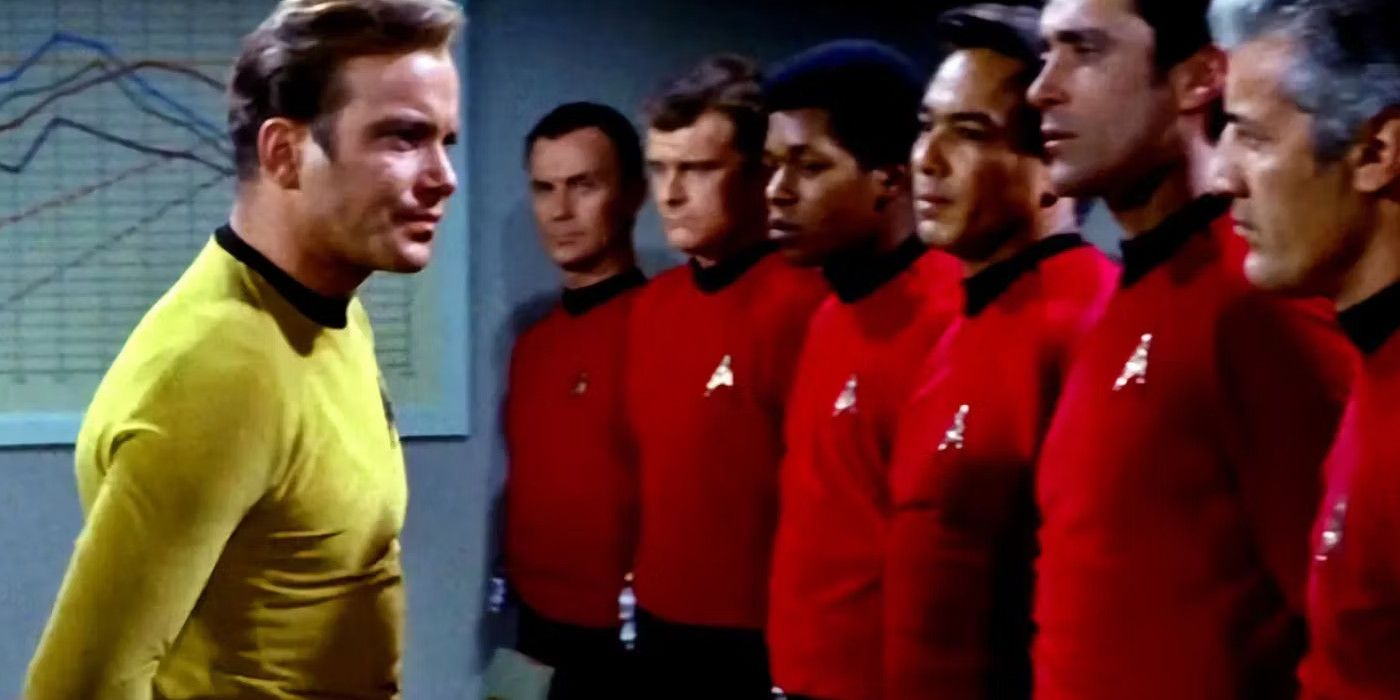Summary
- Star Trek popularized the term redshirt for disposable characters in The Original Series, which often unceremoniously killed security officers.
- The term redshirt also exists in real life for college athletes who are kept out of competition for a year to extend eligibility.
- The redshirt trope ended in Star Trek: The Next Generation when the color red switched to command, making it one of the safest colors for officers.

Star Trek fans may only associate the term redshirt with the unluckiest officers of the Starship Enterprise, but the word also has a real-world meaning that has nothing to do with Star Trek. The term redshirt became associated with Star Trek thanks to the tendency of Star Trek: The Original Series to kill off unnamed security officers. These unfortunate souls were always wearing red Starfleet uniforms, and numerous redshirts were killed in 1960s Star Trek. While every Trek show since Star Trek: The Next Generation has done away with the redshirt trope, the term had already made its way into the pop culture lexicon.
As the USS Enterprise's security officers were often the first ones to face any dangers, it makes sense that more of them would be killed in the line of duty. The term redshirt became a Star Trek trope because these officers were often killed unceremoniously and then promptly forgotten about. Once it became a pattern, these redshirts were doomed from the start, and numerous movies, television shows, and other forms of media have referenced or joked about Star Trek's redshirt trope. However, the term redshirt has another real-world meaning familiar to college sports fans.
Redshirt’s Meaning In Star Trek & The Real World
The term 'redshirt' was coined before Star Trek

In Star Trek: The Original Series, a redshirt was one of the usually unnamed red-shirt-wearing security officers who was killed during a mission. These Starfleet officers would often be members of a landing party, and their deaths would serve to raise the stakes for the rest of the crew. Over the course of TOS, 55 crew members were killed, 24 of whom were wearing red shirts, and so the term came to refer to disposable characters who were killed off soon after being introduced. The 1999 film Galaxy Quest pokes fun at Star Trek's trope, as does the novel Redshirts by John Scalzi and the video game Redshirt.
The first known usage of the term redshirts in regard to college athletes was in 1955, eleven years before Star Trek premiered in 1966.
According to the Merriam-Webster Dictionary, a redshirt is "a college athlete who is kept out of varsity competition for a year in order to extend eligibility." In other words, a redshirt freshman can spend their first academic year practicing with the team and playing in a game or two, before taking on a larger role in subsequent years. This allows the player to have five years of eligibility and continue to play on the team as a fifth-year senior. Also according to Merriam-Webster, the term redshirt was derived from the red jerseys often worn by these players during scrimmages against the regular players.
Star Trek’s Redshirt Trope Ended After The Original Series
Star Trek: The Next Generation changed the colors of Starfleet uniforms. Red went from security to command, and command gold became operations. This switch brought an end to the redshirt trope in Star Trek, although the term retained its meaning in popular culture. From TNG on, officers on the command track have been wearing red, making it one of the safest colors for a Starfleet officer to wear. Star Trek was never going to kill off Captain Jean-Luc Picard (Patrick Stewart) or Captain Benjamin Sisko (Avery Brooks), after all.
With the deaths of Star Trek characters like David Marcus (Merritt Butrick) in Star Trek III: The Seach for Spock and Lt. Tasha Yar (Denise Crosby) in Star Trek: The Next Generation season 1, death began to have more of an impact and real consequences for the other characters. Star Trek: Deep Space Nine took this even further with its darker tone and Dominion War storyline. Even Star Trek shows set before TOS have mostly done away with the trope. Shows like Star Trek: Discovery and Star Trek: Strange New Worlds rarely treat characters as disposable, and which characters live or die has nothing to do with the color of their uniforms. Still, the trope persists, even though Star Trek characters wearing red haven't actually been more likely to die since 1987.



